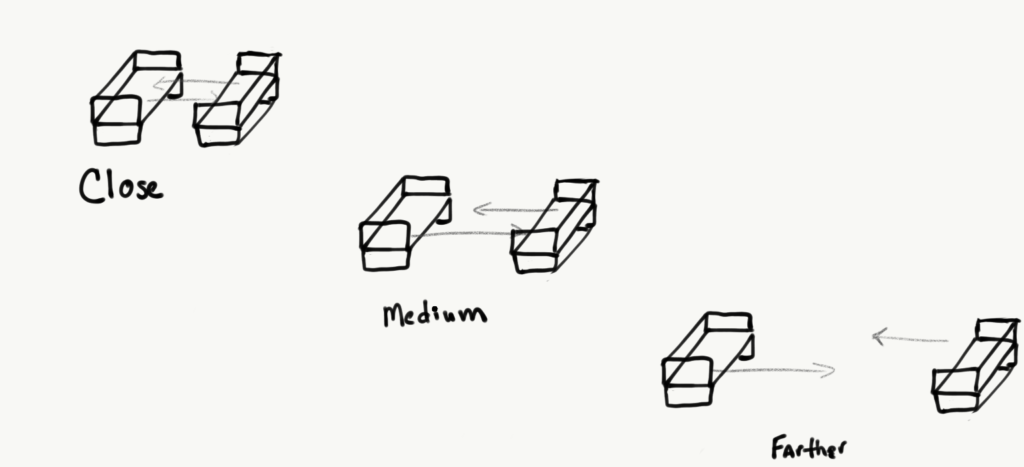Swimming Ideas: Level 2
Streamlines, and the Crawls

Download the Level 2 PDF for your own program.
Minimum Ages: 3 years old.
Participants should be able to stand on their own, understand language, and have control of their limbs, and ability to follow directions. Swimmer must be able to go underwater repeatedly on their own, and be comfortable doing things with the instructor.
Quick Test Criteria:
Can they swim front crawl on their own? If yes, probably level 3, is “no” likely level 2.
Testable Skills
- Streamline 3 body lengths on both front and back (back can be in soldier)
- Streamline and then front crawl arms for 5 body lengths (total).
- Streamline and then back crawl arms for 5 body lengths
- Introduced to fly kick
Why are these skills in Level 2?
Going underwater is the keystone, the foundation upon which all other swimming is based. Gliding, and horizontal forward progress is the first step. Swimming Ideas focuses on teaching participants to move through the water efficiently and well. We want to establish habit and technique that swimmers can draw on naturally without thought. After the participant goes underwater in level 1, we introduce a huge amount of opportunities to flatten the body horizontally to move through the water well.
Horizontal forward progress.
The first three skills in level 2 include streamline. This is a specific term meaning arms above the crown of the head, and the hands positioned in a specific way. We want to repeatedly, always, reinforce that a glide or a streamline comes before swimming. This is a habit we want to instill before swim team. It promotes efficient swimming and teaching movement without the need to swim. When we focus on streamline, focus on glides, then swimmers learn that they can move to safety without the need to move their arms. Those things certainly help, and are our goal to teach, but first we teach body line and position / posture that makes swimming easier.
Streamline + something. This is a formula we’ll use for lessons and for swim team. You get the first taste of it in level 2:
- streamline + front crawl arms
- streamline + back crawl arms
After the body line and the body posture is established and maintained while moving in the water unsupported, we introduce moving the arms to provide propulsion. Crucially remember that the specific form or technique of the arm strokes is not important. Let the arms move in gross large circular movements paying little attention to the specific pat the hands travel. We are focusing more on large motor movements where the arms generally move over the water and travel in the correct direction underwater.
Finally, we introduce fly kick here because it is fairly easy to do once demonstrated. When swimmers are able to move horizontally through the water keeping their body straight and still, they should be able to easily incorporate the undulating fly motion with their bodies. It can also be a fun skill to do in between the 30-50 front glides and back glides a participant will do in a typical 45 minute lesson.
Main activities:
- Various games, and activities around doing glides, moving through the water, traveling, and changing locations. Games will primarily be designed around personal challenges and group races.
- Jumps from the side. Swimmers should be jumping in on their own here.
- This is a good time to practice jumping in, recovering on own or with support and transitioning into a back float/glide, and then using kicks or arms to move to wall.
- Supported front glides with the instructor that transition over the course of the class to streamlines without support.
- Supported back glides with the instructor that transition over the course of the class to streamlines without support.
Special note:
Every effort should be placed into letting swimmers do things on their own. Instructors should be constantly providing support and very slowly, incrementally over time, removing that support, or making the swimmer do just a tad little more on their own.
If you’re using benches, place them close together, and slowly, over time, move them farther and father apart. With one bench, have the instructor stand close, then take one step farther away each time, or over the series of lessons based on the comfort of the individual.
The second priority should be on repetition. Provide as many opportunities to do a glide as possible. We recommend you use the following formula to break up the monotony, and provide a habitual format for quick execution. This is also the same way we run our small groups on the swim team!
Examples:
Everyone goes three times, streamline or front glide.
3 x streamline
Everyone goes five times, back and forth (Start on bench A, go to bench B, and then return to bench A, five times), streamline 1/2 way, and swim front crawl other 1/2.
5x streamline + front crawl
Go from the bench, to the wall, the move over and come back. On the way to the wall, streamline on belly and swim, then on way back, do back glide in soldier.
3 x streamline with front crawl to wall, then back glide back to bench.
